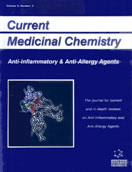Abstract
Neuropeptides released from the activated peripheral terminals of capsaicin-sensitive subpopulation of sensory neurons exert local efferent function besides the classical afferent activity. This substantial population of nociceptive afferents expess the capsaicin (vanilloid subtype 1) VR1 / TRPV1 receptor, which is a noxious heat / proton-gated cation channel. Calcitonin gene-related peptide (CGRP) increases local blood flow by inducing arteriolar vasodilatation, substance P (SP) and neurokinin A cause plasma protein extravasation due to increased microvascular permeability and accumulation of inflammatory cells via neurokinin 1 (NK1) receptors in the innervated area. This set of pathophysiological changes initiated by sensory nerve endings is defined as neurogenic inflammation, which plays significant role in the pathomechanism of numerous diseases like bronchial asthma, allergic rhinitis, conjunctivitis and dermatitis, ekzema, psoriasis, rheumatoid arthritis and migraine. The major problem in the treatment of these conditions is the lack of effective therapy for the neurogenic component of inflammatory processes. Potential ways to inhibit neurogenic inflammation are decreasing the release of inflammatory neuropeptides and / or preventing their effects by receptor antagonists on blood vessels and inflammatory cells. Prejuntional inhibition can be performed by opioid peptides acting mainly on μ receptor, nociceptin through opioid receptor like 1 (ORL1 / OP4) receptor, histamine via H3 receptor, 5-hydroxytryptamine via 5-HT1B / 1D receptor, α2-adrenoceptor agonists, galanine, purine derivatives and somatostatin. According to our results somatostatin released into the circulation from activated sensory nerve terminals exerts systemic antiinflammatory and analgesic actions. Nitric oxide (NO) has been reported to liberate neuropeptides from sensory nerves, selective inhibitor of inducible NO synthase would also be a possibility to inhibit the release of mediators. Several results suggest that potent synthetic CGRP and NK1 receptor antagonists acting on the target tissues are effective in the management of neurogenic oedema formation. VR1 / TRPV1 receptor is at present a hot topic to develop novel analgesic / anti-inflammatory drugs acting on the nociceptors. This receptor can be activated by capsaicin, resiniferatoxin, protons, noxious heat, the endocannabinoid anandamide, and lipoxygenase products. Efforts to develop VR1 antagonists are in progress in major drug companies and the promising experimental evidence obtained in our laboratories favours agents acting on somatostatin receptors, which do not mediate endocrine effects. Potential targets on sensory nerve terminals for the development of new anti-inflammatory drugs are summarized in this review with special emphasis on VR1 receptors and somatostatin analogs.
Keywords: capsaicin-sensitive primary sensory neurons, neurogenic inflammation, vanilloid receptor 1, somatostatin, opioid peptides, cannabinoid receptors, substance p, calcitonin gene-related peptide
 6
6

